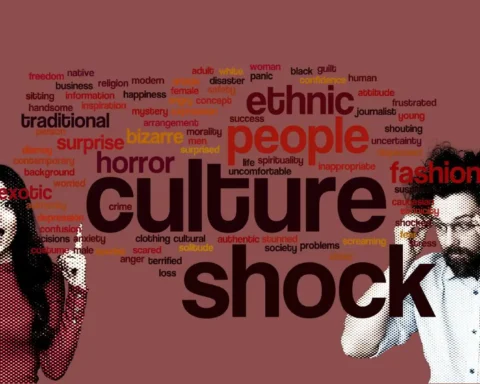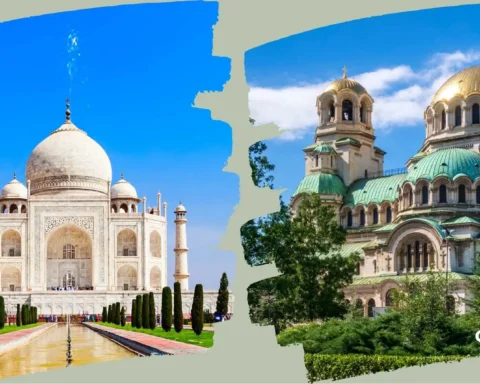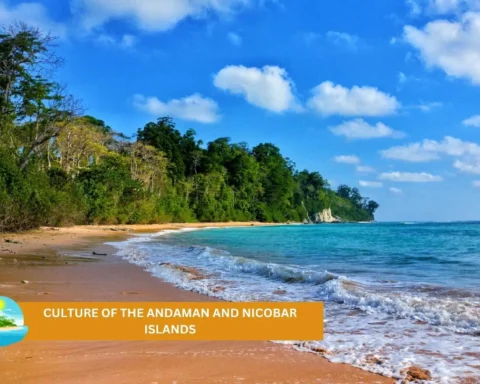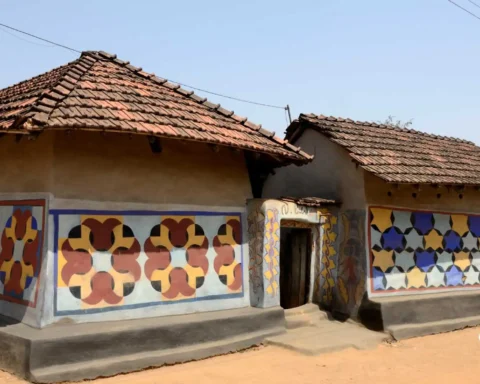India is home to a diverse array of tribal communities, each with its unique cultures, traditions, and ways of life. These indigenous ethnic groups, often called Adivasis, have inhabited the land for centuries, predating the Aryan and Dravidian civilizations, and have preserved their ancestral knowledge and practices through centuries. However, tribal populations in India have historically faced numerous challenges that continue to threaten their existence and livelihoods into the present day.
What are the problems faced by tribals in India? In this blog, we delve into a thorough examination of the myriad challenges confronting tribal communities in India, spanning socio-economic, cultural, political, and environmental issues.
Table of Contents
Characteristics of Tribal Communities
The term “tribe”, despite its common use in academic study and research, still lacks a universal definition. This is particularly due to the sheer diversity of global tribal populations, making it difficult to fit different and dynamic human populations into a single category. Furthermore, tribal people identify themselves as a social group, deriving characteristics from their land and surroundings, which is discrepant with the Indian Constitution’s classification of them as “Scheduled Tribes” based on socio-economic criteria.
Each tribal group is an organisation consisting of several families or groups of families, each with a unique name (Bhil, Dubla, Khasi, Garasiya, Santhal, Toda). Experts in sociology, anthropology, and history, along with various NGOs, define “tribes” using certain measurable characteristics, including:
- Territorial affiliation to designated regions
- Segmental solidarity (social and structural similarity)
- Economic interdependence (reciprocal exchange through barter and gifts)
- No surplus generation
- Importance of family and kinship relations (identity through clan and lineage)
- Use of simple technology
- Closed and insulated, resilient to change
- Endogamy (marrying within the group)
- No specialization of function
- Common language or dialect, usually without a script
- Recognition of social distance from other tribal groups, each with its own set of ethics and unique tribal culture
- Adherence to traditional practices, religious beliefs, customs and taboos
- Tribal panchayats as the administrators of criminal justice
Although this list is not exhaustive, it highlights some of the key features that help tell apart tribal communities.

Tribal Communities in India
In the realm of study and research, tribes have been categorised based on various factors like bio-genetic variations, linguistic diversity, economic practices, and geographical distribution. Different methodologies have led to varying estimates of the total tribal communities in India.
For instance, Roy Burman (1971, Census Data) reported 427 tribal communities, while the Anthropological Survey of India stated 314. Additionally, the Tribal Development Division (Government of India, 1978) identified 613 scheduled tribes in India. Therefore, the available data varies depending on the context and objectives of the study.
With an estimated population of 104 million, tribal people make up 8.61% of India’s total population, with the highest concentrations in the northeastern states and the central tribal belt spanning Rajasthan to West Bengal. Over half of the Scheduled Tribes reside in Madhya Pradesh, Chhattisgarh, Odisha, Maharashtra, Jharkhand, and Gujarat.
At present, the Indian Constitution recognises nearly 700 Scheduled Tribes across states and union territories, with many tribes inhabiting multiple regions. Orissa and Madhya Pradesh have the highest number of scheduled tribes, including Santhals, Gonds, Angamis, Bhils, Khasis, Bhutias, and Great Andamanese.
What are the Problems Faced by Tribals in India?
While most of the world’s population has embraced modernisation, some communities have steadfastly held on to their ethos and traditional values of living in and with nature. Tribal populations, due to their primitive traits, unique culture, geographic seclusion, and reluctance to engage with broader society, face a multitude of challenges in their lives, including educational backwardness, social and religious issues, poverty, exploitation, forced displacement, and health problems.
In the following section, we explore what are the problems faced by tribals in India.
Resource Exploitation and Forced Displacement
The exploitation of natural resources poses a significant challenge for tribal communities in India, for whom their natural surroundings are not only a place of habitation but a source of livelihood. Government policies for economic growth conflict with traditional tribal views on resource utilisation.
This conflict often results in ecological damage as resources are forcefully extracted from tribal territories to fuel industrial and infrastructural development. Consequently, tribal lands are perpetually encroached upon, forcing displacement and disrupting their way of life. Government initiatives to establish industries further exacerbate this issue, leading to the uprooting of tribes from their traditional lands without adequate compensation or support for resettlement and rehabilitation.
This disruption, coupled with tribal communities’ lack of literacy and skills, compounds their difficulties in adapting to new environments. Additionally, governmental disregard for tribal knowledge and practices often sparks resistance and project delays, further complicating the situation.
Poverty and Indebtedness
According to reports from the 1960s and 1970s, poverty is the most pressing issue facing tribal communities. Over the years, a significant portion of the tribal population has remained impoverished, with a majority engaged in basic occupations like hunting, gathering, and agriculture, using rudimentary technology.
This lack of advanced technology results in minimal profits or surplus, leading to low per capita income, well below the national average. Many tribes live in extreme poverty, earning insufficient wages, and often fall into debt with local moneylenders and landlords, who charge high interest rates. To repay debts, tribes frequently mortgage or sell their land.
Factors responsible for this are low wages and illiteracy, leading to a lack of awareness about fair pricing. Complicated processes in the organised sector often trap tribal people in cycles of debt with moneylenders, leading to bonded labour in extreme cases.
This system, known by various names across states, persists due to ineffective governmental interventions. Challenges include inadequate coverage, lack of definition for bonded labour, enforcement constraints, underreporting, and financial limitations for development projects.

Poor Healthcare Development
Healthcare challenges are acute among tribal populations in India, particularly in terms of access to public services and medical personnel. Limited access to quality healthcare services negatively impacts their overall well-being and development, leading to health issues like malnutrition, infectious diseases and high infant mortality rates.
Poor health among tribals is attributed to factors such as lack of personal hygiene, tobacco and alcohol consumption, early marriage, inadequate waste disposal, and lack of family planning. Additionally, overcrowded living conditions, scarcity of clean drinking water, insufficient immunization and medical facilities, and low consumption of essential dietary products contribute to their health challenges.
The shortage of trained healthcare professionals willing to work in tribal areas further exacerbates the situation. Moreover, the absence of tribal representation in healthcare policy-making and implementation contributes to poorly organised services. Medical insurance coverage is minimal, leaving tribal communities vulnerable to fatal illnesses, resulting in low life expectancy among tribals.
Illiteracy
The literacy rate among Scheduled Tribes (STs) has significantly increased from 8.53% in 1961 to 58.96% in 2011, albeit still lower compared to the overall population’s 72.99%. However, dropout rates remain alarmingly high among tribal students, particularly at secondary and senior secondary levels.
The disparity in literacy rates among tribes is evident, with Bihar reporting the lowest rates and Mizoram the highest. Illiteracy and lack of education continue to fuel various tribal issues, including land alienation, indebtedness, and unemployment. Prejudice and discrimination against tribal children, as highlighted in a Human Rights Watch report, further hinder their education and exacerbate tribal problems in India.
Many tribal children work from a young age to support their families, particularly those engaged in hunting, gathering, shifting cultivation, and pastoralism. This leads to the discouragement of formal education among tribal communities due to prolonged economic strain and the prioritisation of immediate financial needs over long-term educational goals. Socio-cultural factors within the communities, such as gender bias and family concerns, further contribute to poor education outcomes.
Additional factors, like infrastructure shortcomings, mismanagement, and teacher absenteeism, further impede educational progress in tribal areas, leading to low enrollment and high dropout rates. Children’s engagement in cultural and social events, coupled with long distances between schools and villages, also affects their access to quality education.
Resistance to Development
Indigenous communities are connected to their territories through deep emotional and ancestral bonds, making them inseparable from their identity and livelihood. Having evolved in isolation, they have developed unique cultures, dialects, and communities closely tied to their region’s resources.
This isolation fosters a strong sense of belonging and self-reliance, leading to reluctance, mistrust, and resistance towards external interventions, which might trigger resistance, such as the case of the Chowra island tribe demolishing a water reservoir, fearing its impact on their health.
This resistance has only grown due to industrialisation, exploitation by moneylenders and traders, and ineffective government policies. Despite government efforts to implement developmental programs, they often face rejection and opposition. Many policies lack an understanding of the tribal people’s connection to their land, exacerbating tensions that may potentially lead to tribal revolts.

Loss of Culture and Tradition
Indigenous tribes in India have experienced gradual changes in their structure and function, driven rather by external circumstances than by acceptance from the non-tribal population. Traditionally simple and rigid, tribal societies are now encountering external influences from the outside world, pushing them towards more complex and civilised forms of living.
In a diverse society like India, tribes interact with various social compartments like religion, economy, power, and politics, leading to significant shifts. Religion has notably impacted tribal communities, often marginalised and susceptible to conversions due to ostracism or illiteracy. For example, in the Chhotanagpur region, many Kharias converted to Christianity, gaining educational opportunities through Christian missionaries.
This led to migration to urban areas, causing loss of land and social isolation from their rural counterparts, creating internal clefts within the tribe. Conversions to different religious sects within a tribe can also create socio-cultural barriers, tensions, and alienation from one’s distinct culture and tribal identity.
RELATED:
- Is the Culture of the Santhal Tribe Disappearing? Here’s What You Need to Know
- 10 Must-Try Indian Tribal Foods You’ve Never Heard Of (But Will Love!)
- Empowering the Gurjar Community: Tribal Advocacy with Javaid Rahi
- Sports for Tribal Advancement: The Vision of START with Munish Makhija and Ritwik Bhattacharya
Conclusion
On reflection upon the role and place of tribal populations in India, the question, ‘What are the problems faced by tribals in India?’ resounds as a poignant call to action. Although there have been efforts to address the issue through constitutional provisions, mere administrative and legislative measures are insufficient to ameliorate socio-economic disparities or ensure adequate tribal rehabilitation and upliftment. Understanding the tribal worldview is essential for crafting comprehensive steps that honour their cultural heritage and pave the way for inclusive empowerment.

FAQs
What are the problems faced by the tribal communities in India?
Tribal communities in India grapple with issues such as land alienation, lack of access to healthcare and education, poverty, exploitation, and cultural marginalization. These challenges stem from historical injustices, inadequate policies, and socio-economic disparities, perpetuating systemic inequalities for indigenous populations.
What are the major health problems in tribal communities in India?
Major health problems in tribal communities in India include inadequate access to healthcare facilities, high prevalence of malnutrition, lack of hygiene, infectious diseases, and limited awareness about preventive healthcare measures. These issues are exacerbated by geographical remoteness, socio-economic marginalisation, and cultural barriers to healthcare services.
What are the tribal communities in India?
Tribal communities in India, constituting a demographic segment of approximately 8.61%, comprise diverse ethnic groups such as the Bhil, Santhal, Gond, Munda, and Khasi, among numerous others. These communities inhabit various regions across the country, particularly central, eastern, and northeastern India, maintaining distinct cultural traditions, languages, and socio-economic practices.









